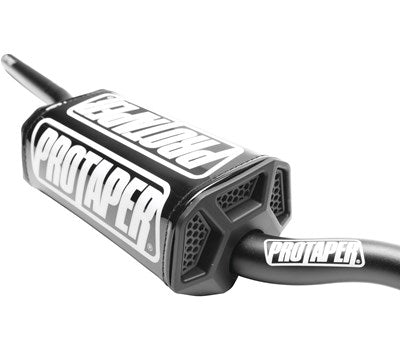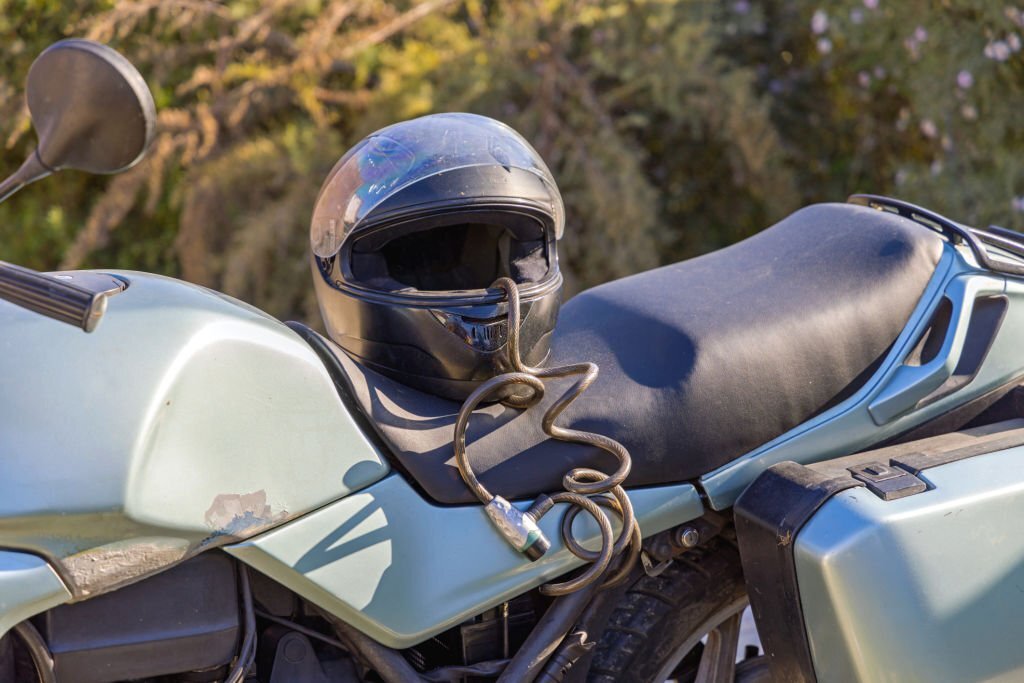Textile motorcycle jackets offer a versatile, comfortable, and protective option for riders. This guide covers the benefits of textile jackets, how they compare to leather, tips for waterproofing, and what features to look for in a quality jacket. We'll explore the best textile motorcycle jackets and provide answers to frequently asked questions.
Table of Contents
- Is Leather or Textile Better for Motorcycles?
- What is a Textile Motorcycle Jacket?
- How Do You Waterproof a Textile Motorcycle Jacket?
- What's the Number One Advantage of Textile Riding Jackets?
- Is Leather or Textile More Protective?
- Do Textile Jackets Stretch?
- What is the Best Motorcycle Jacket?
- How Should a Textile Motorcycle Jacket Fit?
- Is Leather or Kevlar Better for Motorcycles?
- FAQ
Is Leather or Textile Better for Motorcycles?
When choosing between leather and textile for motorcycle jackets, each material has its advantages. Leather motorcycle jackets are often favored for their classic style and durability. However, textile jackets have evolved to offer significant benefits, particularly in terms of versatility and comfort.
Textile motorcycle jackets provide excellent protection and are typically lighter and more breathable than leather. They often feature high-visibility elements and reflective materials, which enhance rider safety. With adjustable fits, thermal linings, and zippered vents, textile jackets cater to a variety of weather conditions, making them a great all-season choice.
What is a Textile Motorcycle Jacket?
A textile motorcycle jacket is made from synthetic materials like nylon, polyester, or Kevlar. These jackets are designed to offer high levels of comfort, protection, and functionality. Unlike leather, textile jackets are often equipped with features such as:
- Adjustable fit: To ensure comfort and protection.
- Thermal lining: For warmth in colder weather.
- Mesh panels and zippered vents: To enhance airflow and keep you cool.
- Impact protection: With elbow and shoulder armor.
- Waist adjusters: For a snug fit.
- Waterproof and breathable materials: To protect against rain without compromising comfort.
Explore our range of textile jackets to find one that suits your needs.
How Do You Waterproof a Textile Motorcycle Jacket?
Waterproofing a textile motorcycle jacket is essential for maintaining its protective qualities in wet conditions. Many textile jackets come with built-in waterproof membranes, but there are additional steps you can take to ensure maximum waterproofing:
- Use a waterproofing spray: Apply a specialized spray to the exterior of your jacket to add an extra layer of protection.
- Seam sealing: Ensure all seams are properly sealed to prevent water ingress.
- Regular maintenance: Clean and reapply waterproofing treatments as needed to maintain effectiveness.
For more tips on choosing and maintaining motorcycle jackets, check out our blog on exploring motorcycle jackets.
What's the Number One Advantage of Textile Riding Jackets?
The primary advantage of textile riding jackets is their versatility. These jackets are designed to perform well in various weather conditions and riding scenarios. Features like removable liners, adjustable vents, and waterproof materials make them adaptable to both warm and cold climates.
Textile jackets are also typically lighter than leather, which can enhance rider comfort on long rides. The incorporation of CE rated armor provides high levels of protection while maintaining flexibility and ease of movement.
To discover more about the different types of motorcycle jackets and their benefits, visit our motorcycle jackets collection.
Is Leather or Textile More Protective?
When it comes to protection, both leather and textile jackets have their strengths. Leather is known for its abrasion resistance and durability, making it a popular choice for high-speed riding. However, modern textile jackets are engineered with advanced materials that offer comparable levels of protection.
Textile jackets often include CE rated armor for impact protection, high visibility elements for safety, and reinforced stitching for durability. Additionally, textile materials can be designed to be weatherproof, providing protection against the elements while maintaining breathability.
For a deeper dive into the classic appeal and protective qualities of leather jackets, read our blog on leather motorcycle jackets.
Do Textile Jackets Stretch?
Textile motorcycle jackets generally do not stretch like leather jackets. However, they are designed with flexibility and comfort in mind. Many textile jackets incorporate stretch panels or adjustable features to enhance the fit and movement.
Materials used in textile jackets, such as nylon and polyester, maintain their shape and structure over time. This ensures consistent protection and fit without the risk of stretching out. Additionally, features like waist adjusters and adjustable cuffs allow for a customized fit, making the jacket comfortable for a wide range of body types.
What is the Best Motorcycle Jacket?
The best motorcycle jacket depends on individual preferences, riding conditions, and specific needs. For those seeking a balance between protection, comfort, and versatility, a textile motorcycle jacket is often the ideal choice. Key features to look for in the best textile motorcycle jacket include:
- CE rated armor: Provides impact protection for shoulders, elbows, and back.
- Thermal lining: Keeps you warm during cold rides.
-
**Zippered vents and
mesh panels**: Enhance airflow for hot weather riding.
- Waterproof and breathable materials: Ensure comfort and protection in wet conditions.
- Reflective materials and high visibility elements: Increase safety by making you more visible to others on the road.
To find a jacket that suits your needs, browse our collection of motorcycle jackets and explore the different options available.
How Should a Textile Motorcycle Jacket Fit?
A well-fitting textile motorcycle jacket should offer a snug yet comfortable fit. Here are some tips to ensure you get the right fit:
- Snug at the waist and cuffs: Use the adjustable features to prevent the jacket from flapping in the wind.
- Proper sleeve length: Sleeves should reach the wrists when your arms are extended in a riding position.
- Armor placement: Ensure that the elbow and shoulder armor stays in place and doesn't shift when you move.
- Room for layers: Allow enough space for layering underneath, especially if the jacket has a thermal liner for cold weather.
An adjustable fit can enhance comfort and safety, making your rides more enjoyable and secure.
Is Leather or Kevlar Better for Motorcycles?
Kevlar and leather each offer unique benefits for motorcycle gear. Leather is traditionally valued for its abrasion resistance and classic style, making it a popular choice among riders. However, Kevlar provides several advantages that make it an excellent material for motorcycle jackets:
- Lightweight: Kevlar is lighter than leather, reducing rider fatigue on long journeys.
- High tensile strength: Kevlar fibers are incredibly strong and resistant to cuts and abrasions.
- Heat resistance: Kevlar can withstand high temperatures, adding an extra layer of protection.
Textile jackets often incorporate Kevlar reinforcements to enhance their durability and protective qualities. This combination allows riders to enjoy the flexibility and comfort of textile materials with the added strength of Kevlar.
For more information on different motorcycle jacket materials, visit our blog on exploring motorcycle jackets.
FAQ
Here are some frequently asked questions about textile motorcycle jackets, providing additional insights to help you make an informed decision.
1. Are Textile Motorcycle Jackets Good for All Seasons?
Yes, textile motorcycle jackets are designed to be versatile and suitable for all seasons. They often come with removable thermal liners for winter and zippered vents or mesh panels for summer, making them adaptable to varying weather conditions.
2. How Do You Clean a Textile Motorcycle Jacket?
To clean a textile motorcycle jacket, follow these steps:
- Remove the armor and liners.
- Close all zippers and Velcro.
- Hand wash or machine wash on a gentle cycle using mild detergent.
- Air dry away from direct sunlight or heat sources.
Always check the manufacturer’s instructions for specific care guidelines.
3. Do Textile Motorcycle Jackets Provide Good Airflow?
Yes, many textile jackets are equipped with mesh panels and zippered vents to enhance airflow, making them ideal for warm weather riding. These features help keep the rider cool by allowing air to circulate through the jacket.
4. Can You Wear a Backpack with a Textile Motorcycle Jacket?
Absolutely, textile motorcycle jackets are generally designed to be compatible with backpacks. Look for jackets with features like reinforced shoulders and back padding to provide extra comfort when wearing a backpack.
5. How Durable are Textile Motorcycle Jackets?
Textile motorcycle jackets are made from high-quality synthetic materials that offer excellent durability. Materials like Cordura, Kevlar, and reinforced nylon are commonly used to ensure long-lasting performance and resistance to abrasions and tears.
6. What Should You Wear Under a Textile Motorcycle Jacket?
Wear a moisture-wicking base layer to keep sweat away from your skin. Depending on the weather, you can add layers like a thermal shirt in colder conditions. Avoid bulky clothing that can restrict movement or affect the fit of the armor.
7. Do Textile Motorcycle Jackets Have Good Impact Protection?
Yes, most textile motorcycle jackets come with CE rated armor at key impact areas such as the shoulders, elbows, and back. This armor is designed to absorb and distribute the force of impacts, providing excellent protection during a fall or collision.
8. Are Textile Motorcycle Jackets Waterproof?
Many textile jackets are designed to be waterproof or have waterproof liners. Materials like Gore-Tex or other waterproof membranes are commonly used to keep you dry while maintaining breathability.
9. How Long Do Textile Motorcycle Jackets Last?
The lifespan of a textile motorcycle jacket depends on the quality of materials and how well it is maintained. With proper care, a high-quality textile jacket can last several years. Regular cleaning and reapplication of waterproof treatments can extend its lifespan.
10. Can You Replace the Armor in a Textile Motorcycle Jacket?
Yes, the armor in most textile motorcycle jackets can be replaced or upgraded. Look for jackets with removable armor pockets, allowing you to switch out the standard armor for higher-grade protection if desired.
In conclusion, textile motorcycle jackets offer a blend of protection, comfort, and versatility, making them an excellent choice for riders of all types. Whether you’re tackling long-distance tours or daily commutes, a well-chosen textile jacket can provide the safety and adaptability you need.
Explore our range of motorcycle jackets to find the perfect fit for your riding style.
This concludes the comprehensive guide to textile motorcycle jackets. For more information and to view our complete collection, visit Moto1. Safe riding!







